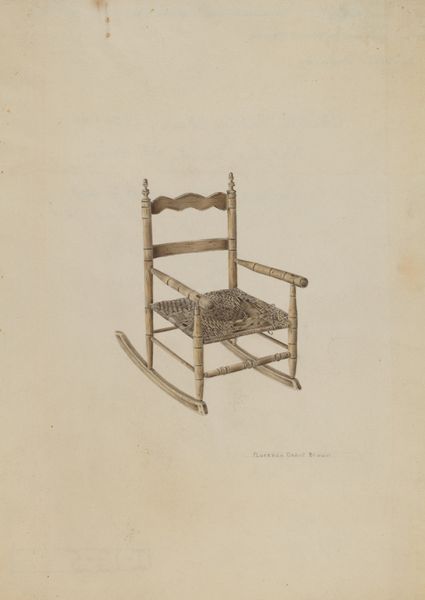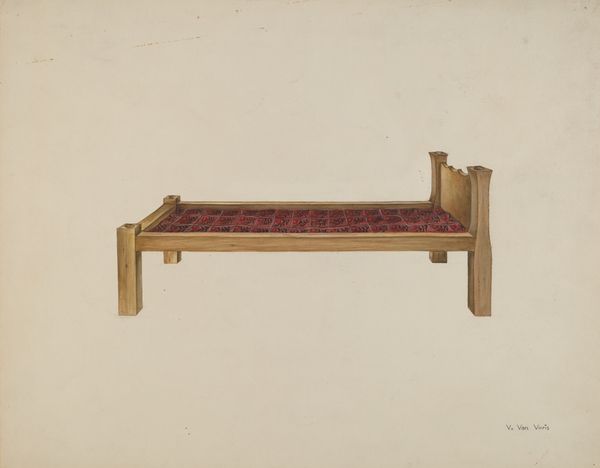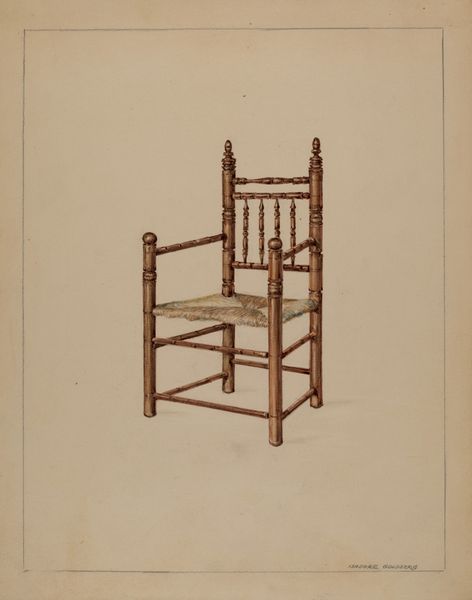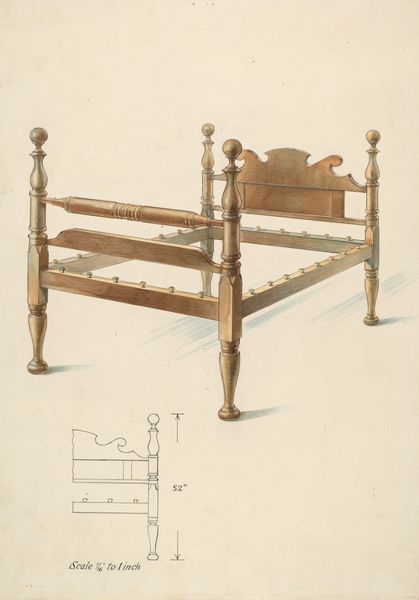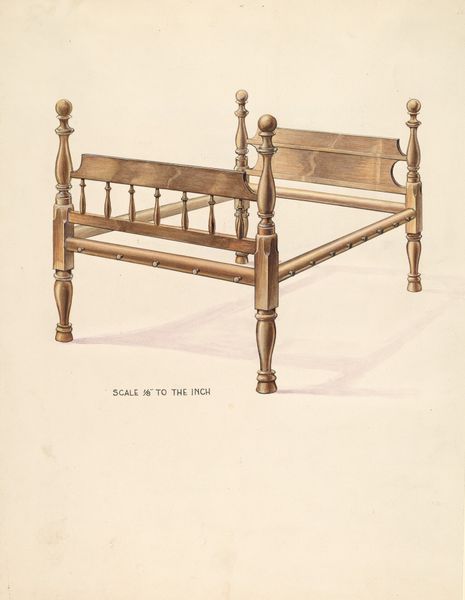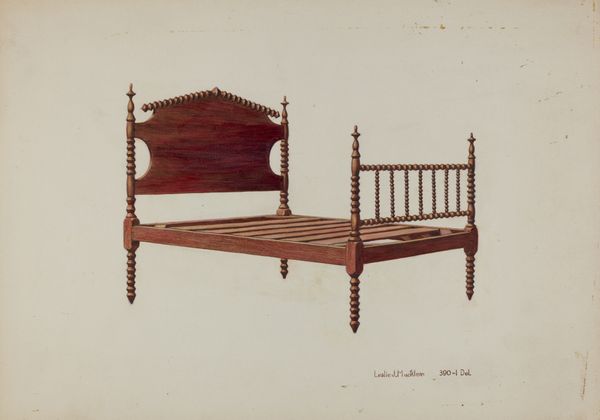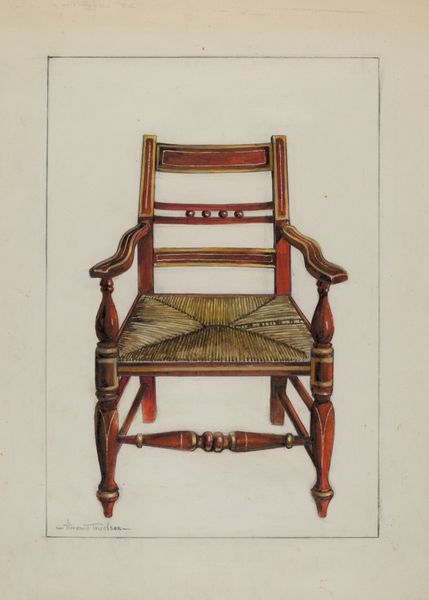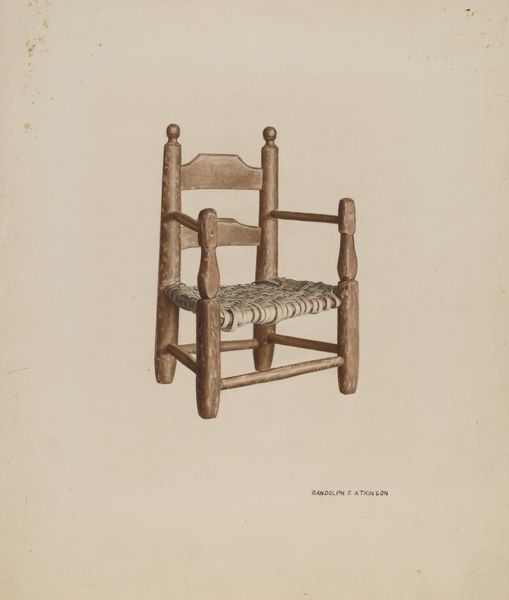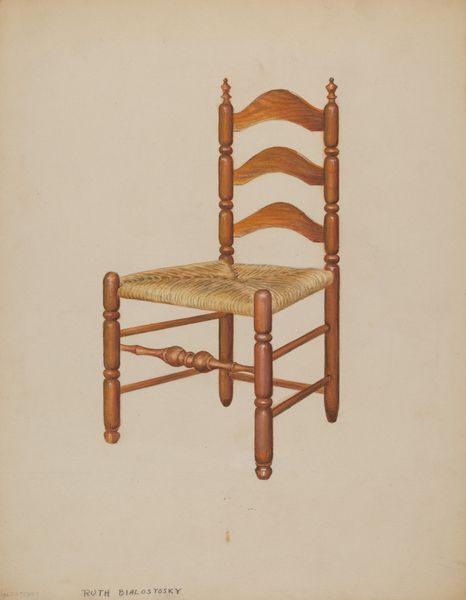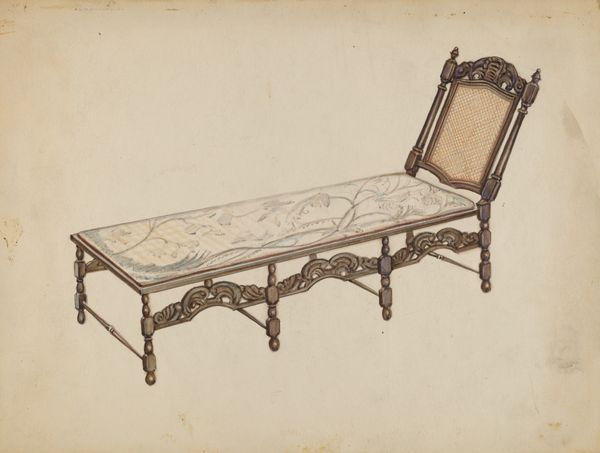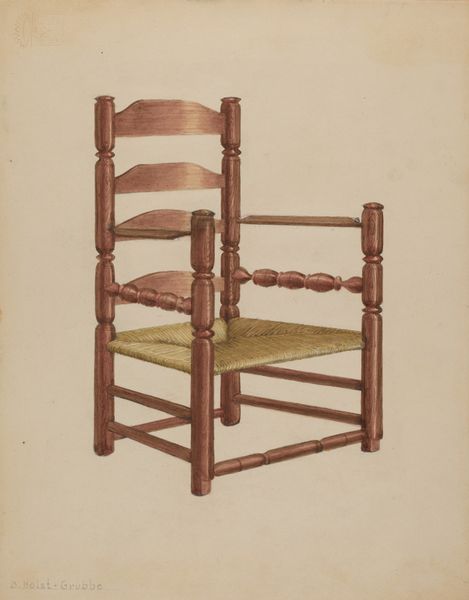
drawing, watercolor
#
drawing
#
water colours
#
watercolor
#
watercolour illustration
#
watercolor
Dimensions: overall: 22.9 x 28 cm (9 x 11 in.) Original IAD Object: 14 1/8" long; 10 1/4" wide; 13 3/4" high
Copyright: National Gallery of Art: CC0 1.0
Editor: Here we have Francis Law Durand's "Doll's Bed," a watercolor from between 1935 and 1942. It feels both quaint and a bit lonely, sitting there so formally in the center of the page. What do you see in this piece? Curator: I see an object imbued with the complex symbolism of childhood and domesticity during a turbulent era. A doll’s bed, seemingly innocuous, can be a site of cultural inscription, reflecting societal expectations around gender roles and caretaking. The choice of watercolor is significant – a medium often associated with femininity and delicacy. How might we consider this in relation to the historical context of the 1930s and 40s? Editor: So, are you suggesting it's more than just a picture of a little bed? Like, a commentary on women's roles? Curator: Precisely. Think about the socio-political climate. This piece was created during the Depression era and into World War II. Traditional roles were both strained and reinforced. The doll’s bed can be interpreted as a microcosm of the home, a space where young girls were, and perhaps still are, taught to perform domestic duties. But I wonder if there's something else here, too - what do you notice about the fact that it is just the bed and no doll is present? Editor: That's interesting. It makes me think about absence and maybe even loss. It challenges the idea of childhood being purely innocent and happy. Curator: Exactly. The empty bed could symbolize interrupted innocence, deferred dreams, or even the anxieties of a generation facing profound uncertainties. By looking at the historical context and material choices we can interpret the image through an intersectional lens, bringing discourses on childhood, gender, class, and historical trauma. Editor: That’s really fascinating. I would have just seen a drawing of a doll bed! It makes you realize that even seemingly simple art can hold so much depth. Curator: Absolutely. Art invites us to engage critically with the world and question the narratives we inherit. And by bridging the historical with contemporary theory we unveil layered perspectives that were not immediately visible.
Comments
No comments
Be the first to comment and join the conversation on the ultimate creative platform.
